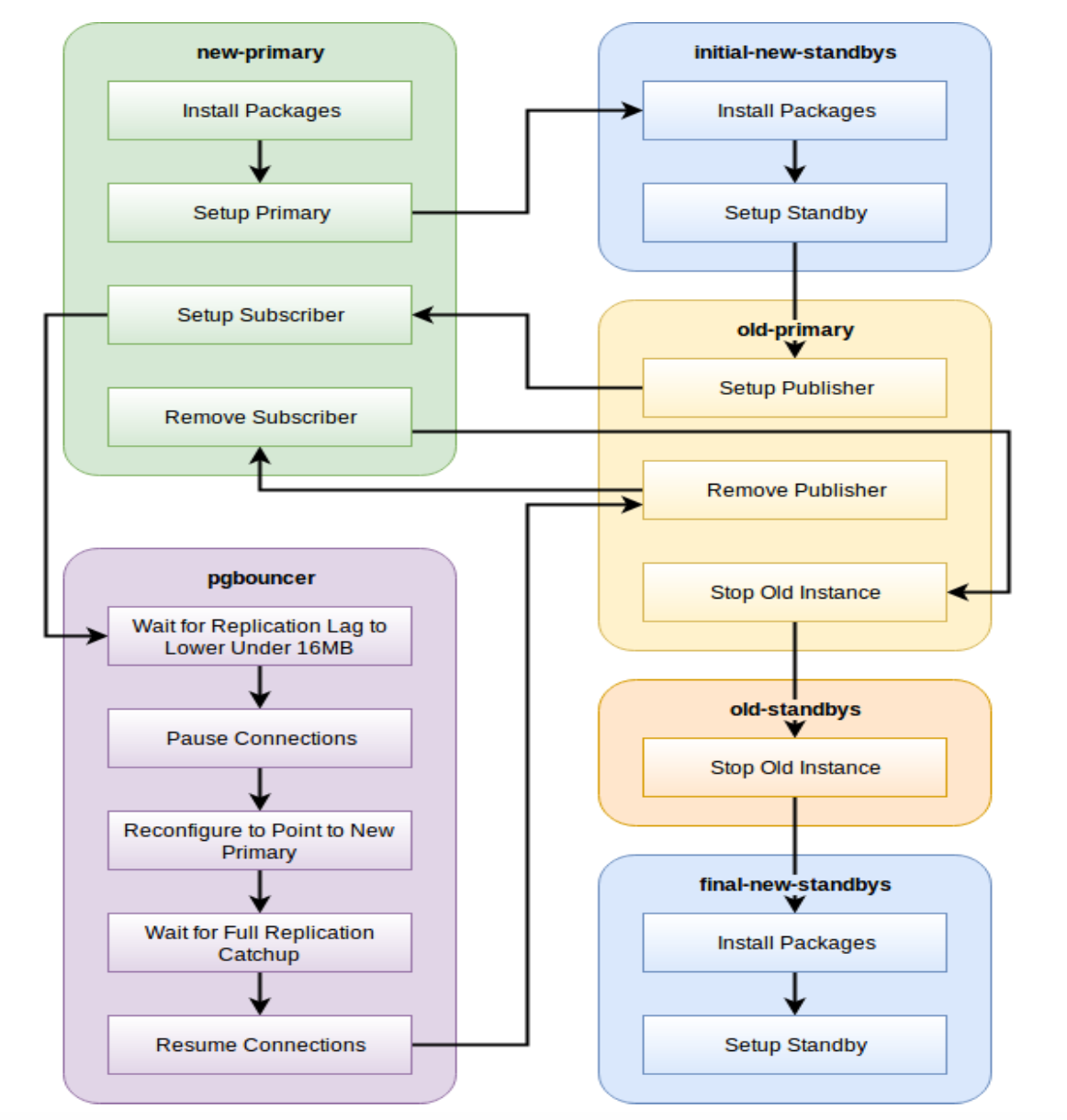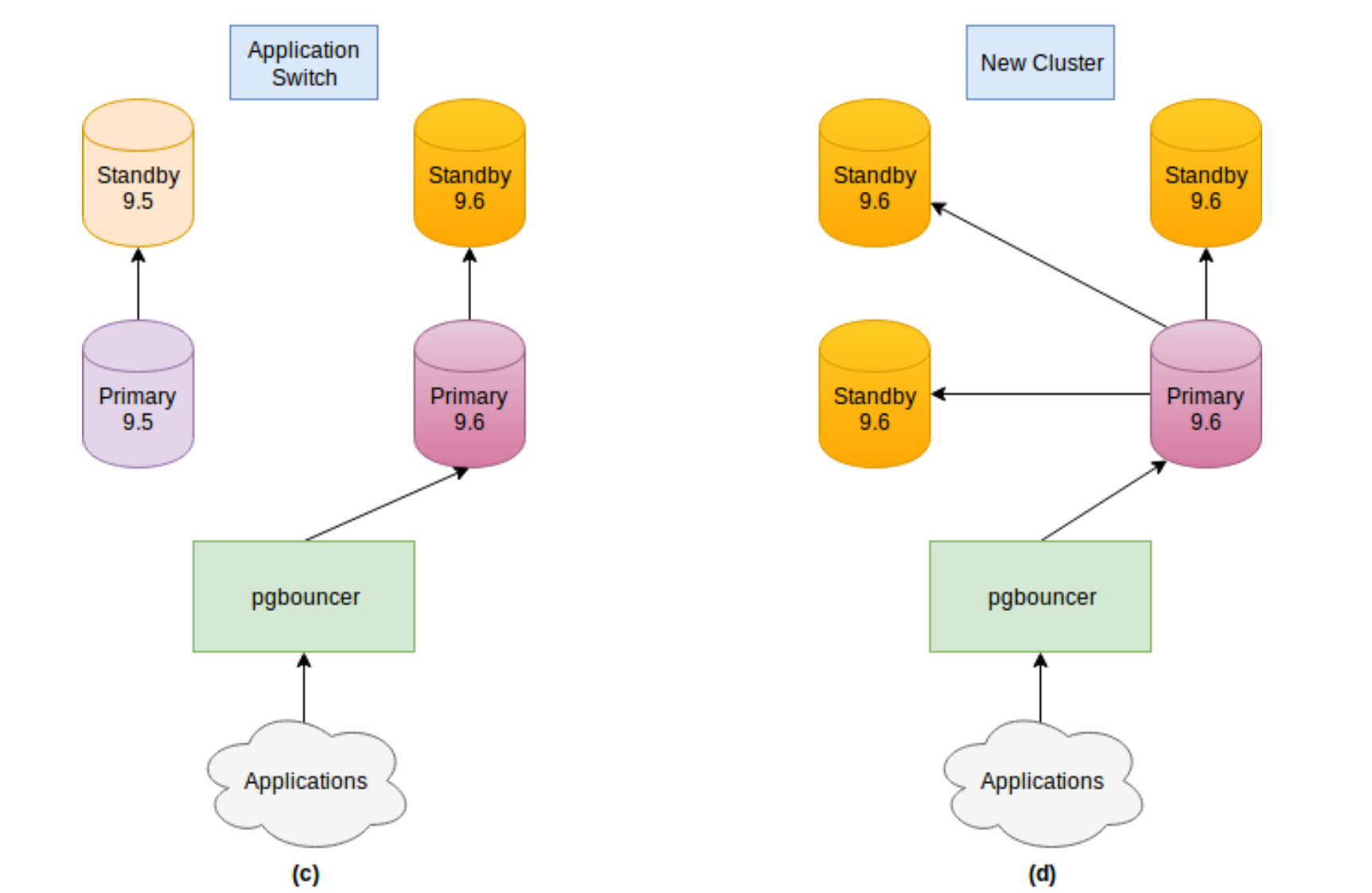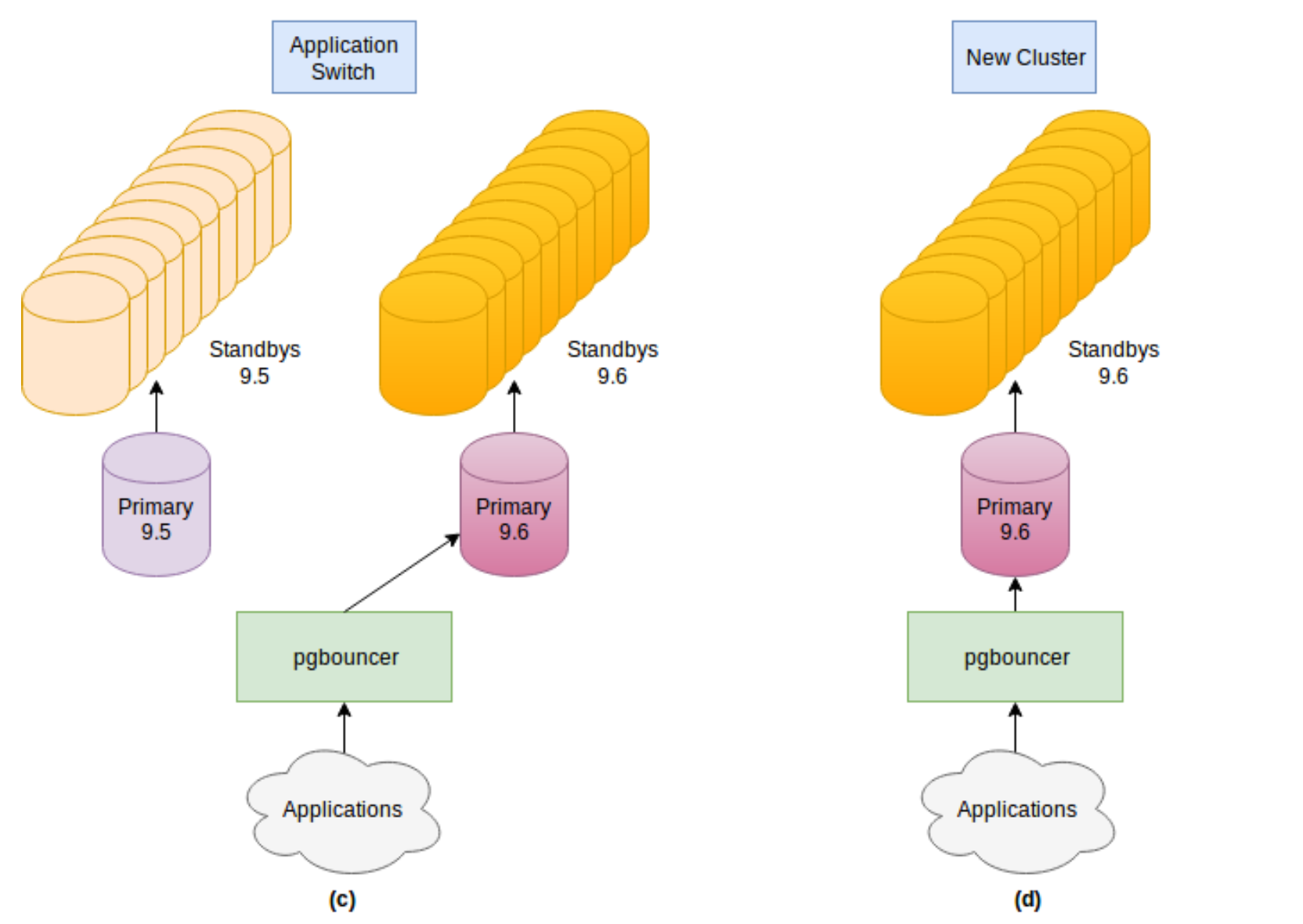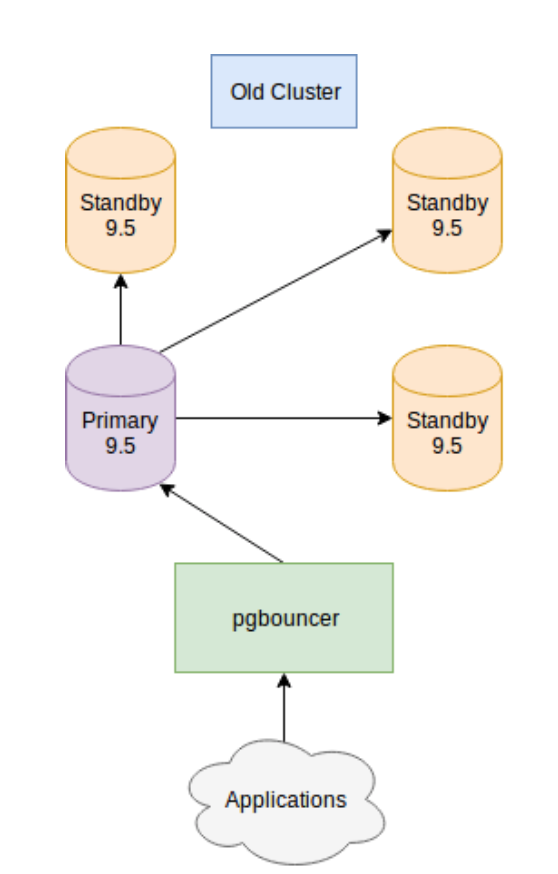Near-Zero Downtime Automated Upgrades of PostgreSQL Clusters in Cloud



Gülçin Yıldırım 156398IASM
Master's Thesis, June 2017
Supervisor: Tarmo Robal, PhD

Agenda
Goals & Motivation
Problems & How to Solve?
Platform Implementation
Case Studies & Results
Outlook
Conclusion & Summary







Problems?

DOWNTIME
Revenue Loss

Reputation Loss
High Availability?
SLAs?
Low Capacity?

Database Anyone?



Banks

Social Networks
Desktop Apps
Startups
Medium-size
Enterprises
To Upgrade, or not to Upgrade


-
New features
-
Security patches
-
Perfomance Updates
-
Bug fixes
-
Outdated, no support
-
Vulnerable to attacks
-
Poor Perfomance
-
Buggy, hard to maintain
Why Automate?
- Risk & Errors
- Cost
- Time-to-market
- Reproducibility
- Repeatability
- Efficiency

- Updating nasa.gov: 1 hr to 5 mins
- Patching updates: Multi-day to 45 mins
- Application stack setup: 1-2 hrs to 10 mins

Ansible Loves PostgreSQL

( in the s )





Postgres Modules: 6
AWS Modules: 100
PostgreSQL
252
Database
208
Cloud
116
Upgrade
50
Power of Logical Replication


-
Offline Conversion
-
pg_dump/pg_restore
-
pg_upgrade
-
-
Online Conversion
-
pglogical
-
pglupgrade
-
1
2
Elements of the solution

pglogical
pgbouncer
Ansible
AWS
pglupgrade
How
Does It Work?

1
2
3
4
5
6
7
8
9
10
11
12
13
14
15
16
First Case: High Availability

First Case: High Availability (2)

Second Case: Read Scalability

Second Case: Read Scalability(2)

Results
| Metric (1st case) | pg_dump/pg_restore | pg_upgrade | pglupgrade |
|---|---|---|---|
| Primary Downtime | 00:24:27 | 00:16:25 | 00:00:03 |
| Partial cluster HA | 00:24:27 | 00:28:56 | 00:00:03 |
| Full cluster capacity | 01:02:27 | 00:28:56 | 00:38:00 |
| Length of upgrade | 01:02:27 | 00:28:56 | 01:38:10 |
| Extra disk space | 800 MB | 27 GB | 10 GB |
| Metric (2nd case) | pg_dump/pg_restore | pg_upgrade | pglupgrade |
|---|---|---|---|
| Primary Downtime | 00:23:52 | 00:17:03 | 00:00:05 |
| Partial cluster HA | 00:23:52 | 00:54:29 | 00:00:05 |
| Full cluster capacity | 00:23:52 | 03:19:16 | 00:00:05 |
| Length of upgrade | 00:23:52 | 03:19:16 | 01:02:10 |
| Extra disk space | 800 MB | 27 GB | 10 GB |
Back to the Future




- There is a need for a near-zero downtime automated upgrade solution for PostgreSQL [PgCon 2017 Developer Meeting]
- Solution will be introduced to the community at PGDay'17 Russia on 6th July
- The tool will have a use in 2ndQuadrant and our customers
- Applicable to other DBMSs through logical replication
- Applicable to other Operating Systems
- PostgreSQL 10 will have built-in logical replication
Conclusion
-
Database clusters can be upgraded with minimal downtime without users being affected while the upgrade is happening.
-
An application can still respond to the request only with a small drop in performance.
-
Thesis and the case studies prove that pglupgrade minimizes the downtime to the level of 3-5 seconds.

Summary
-
THE GOAL: Minimize the downtime for database upgrades, specifically on PostgreSQL
-
METHODOLOGY: Engineer logical replication as an upgrade method
-
IMPLEMENTATION: Develop pglupgrade tool to automate the upgrade process using Ansible
-
CASE STUDIES: Benchmark on two different PostgreSQL clusters in cloud
-
RESULTS & CONCLUSION: Near-Zero downtime achieved without affecting the users

Thanks!

Questions

First Question

[old-primary]
54.171.211.188
[new-primary]
54.246.183.100
[old-standbys]
54.77.249.81
54.154.49.180
[new-standbys:children]
old-standbys
[pgbouncer]
54.154.49.180
Inventory file hosts.ini
$ ansible-playbook -i hosts.ini pglupgrade.yml
Running pglupgrade playbook
Second Question

- name: Switch the pgbouncer (and applications) to new primary
hosts: pgbouncer
become: true
become_user: postgres
vars_files:
- config.yml
roles:
- role: pgbouncer
tags:
- pgbouncer
pgbouncer play in pglupgrade playbook

remove
add